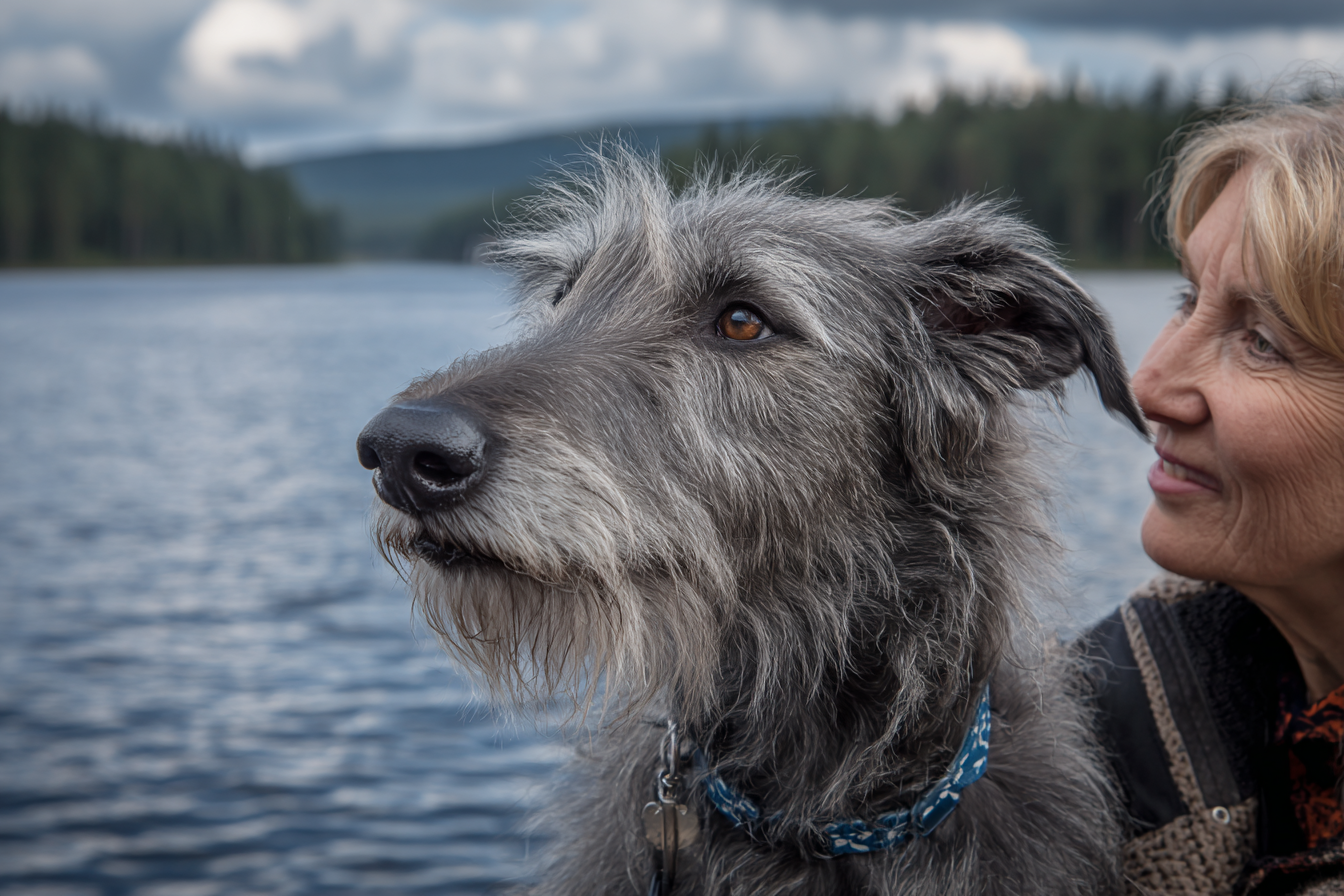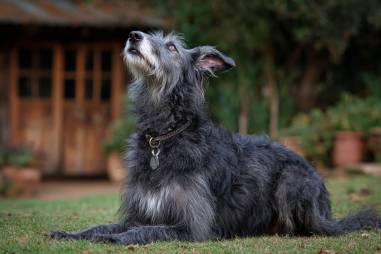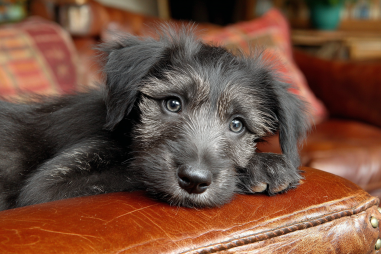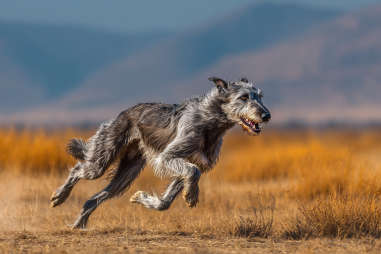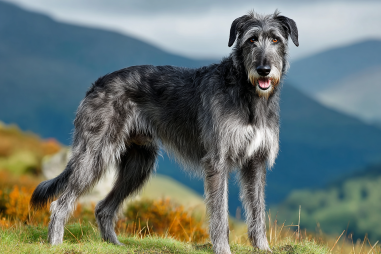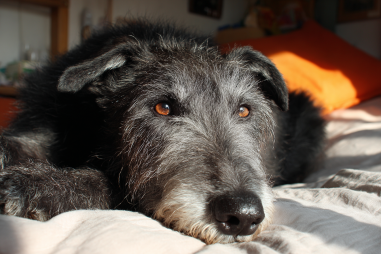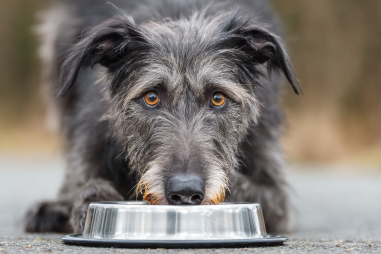Scottish Deerhounds are majestic dogs known for their tall, lean frame and distinctive wiry coat. Grooming these gentle giants might seem daunting at first due to their unique fur texture and size, but with the right knowledge and tools, maintaining their coat becomes a rewarding part of your bonding routine. Whether you’re a new owner or looking to refine your grooming technique, this guide offers everything you need to keep your Scottish Deerhound looking healthy, happy, and stunning.
Overview of Scottish Deerhound Coat Type
The Scottish Deerhound’s coat is one of its most defining features. It’s a rough, wiry, and somewhat shaggy double coat designed to protect the dog from the cold and wet climate of the Scottish Highlands. The outer coat is coarse and harsh to the touch, while the undercoat is softer, providing insulation. This combination helps repel dirt and water but also means the coat is prone to tangles and mats if not properly cared for.
This breed sheds moderately throughout the year but tends to have heavier shedding during seasonal changes in spring and fall. Despite their somewhat rugged appearance, Scottish Deerhounds benefit significantly from regular grooming to keep their coat free from debris and looking its best.
Tools Needed for Grooming
Before diving into the grooming process, having the right tools on hand is essential. Here’s what you’ll need to groom your Scottish Deerhound effectively:
- Slacken coat brush: A sturdy brush with stiff bristles helps remove dirt and loose hairs from the outer coat without damaging the wiry texture.
- Comb with wide and narrow teeth: Useful for detangling and smoothing the undercoat, especially around sensitive areas like ears and legs.
- Slicker brush: Helps in breaking up mats and tangles gently without hurting the skin.
- Grooming scissors or thinning shears: To trim stray hairs and tidy up around the feet, ears, and tail.
- Nail clippers or a grinder: Necessary for keeping nails short and preventing discomfort or injury.
- Ear cleaning solution: Helps keep ears free of wax buildup and infections.
- Dog shampoo and conditioner: Formulated for wiry coats to cleanse without stripping natural oils.
Having these tools ready and maintaining them in good condition will make the grooming experience smoother for both you and your Deerhound.
Step-by-Step Grooming Process
Grooming a Scottish Deerhound involves several steps that focus on maintaining the integrity of their wiry coat and overall hygiene. Here is a detailed grooming routine to follow:
1. Brushing
Start by thoroughly brushing your Deerhound using the slacken coat brush. Brushing should be done at least once a week, or more frequently during shedding seasons. Work methodically from the head down to the tail, paying attention to behind the ears, under the legs, and near the collar area—common spots for tangles and mats. Follow up with the comb to finesse any leftover tangles or knots.
2. Bathing
Bathing your Deerhound does not need to be frequent—about every 6 to 8 weeks or when they get particularly dirty is sufficient. Use a mild, wiry-coat-friendly shampoo and conditioner to preserve natural oils while cleansing. Rinse thoroughly to avoid residue, which can cause skin irritation. Always dry the coat completely after bathing to prevent moisture-related skin problems.
3. Trimming
Scottish Deerhounds don’t require extensive trimming like some other breeds, but maintaining a neat appearance involves trimming excess hair around the feet, ears, and tail. Use grooming scissors or thinning shears to lightly shape these areas and remove any unruly strands.
Tips for Maintaining Coat Health
A healthy coat is a sign of a well-cared-for Scottish Deerhound. Beyond regular grooming, there are several key tips to keep their coat in top condition:
- Proper nutrition: Feed your Deerhound a balanced diet rich in omega fatty acids, which promote shiny, healthy fur.
- Hydration: Adequate water intake supports skin elasticity and coat vitality.
- Regular exercise: Keeping your dog active stimulates blood flow and overall well-being, indirectly benefiting coat health.
- Parasite control: Use flea and tick prevention regularly to avoid irritation that can damage the coat and skin.
- Avoid over-bathing: Too much washing can strip natural oils, so stick to the recommended bathing routine.
Dealing with Seasonal Shedding
During spring and fall, Scottish Deerhounds experience an increase in shedding as they transition between coats. Managing this period requires extra attention to grooming:
- Increase brushing frequency: Brush your dog several times a week to remove loose fur and prevent mat formation.
- Consider using a de-shedding tool: A specialized rake or blade designed for wiry coats can help remove dead hair more effectively.
- Maintain a clean environment: Frequent vacuuming and washing of bedding reduce the accumulation of loose fur around your home.
Patience is key during these seasons. Regular grooming not only aids in coat health but also reduces the amount of fur left on furniture and clothes.
Nail Trimming and Ear Cleaning
Grooming your Scottish Deerhound isn’t just about their coat. Nail trimming and ear cleaning are critical aspects of their overall health care.
Nail Trimming
Long nails can cause discomfort and impact your dog’s gait. Trim nails every 3 to 4 weeks or as needed depending on activity level. If you’re nervous about trimming, start slowly and use appropriate nail clippers or a grinder. Be mindful of the quick (the pink part inside the nail), which is sensitive and can bleed if clipped.
Ear Cleaning
Scottish Deerhounds have large ears that can trap dirt and moisture, making them prone to infections. Clean their ears weekly with a vet-recommended ear cleaner and a soft cloth or cotton ball. Avoid inserting anything deep into the ear canal and watch for signs of redness, odor, or excessive wax buildup, which may require a vet’s attention.
Regular maintenance of nails and ears complements your grooming routine and helps keep your Deerhound comfortable and healthy.
Keeping Your Scottish Deerhound Looking Their Best
Grooming your Scottish Deerhound is more than just a chore—it’s an opportunity to strengthen your bond and ensure their well-being. With a coat as unique as theirs, it’s important to treat each part of the grooming process with patience and care. From understanding their wiry coat to mastering brushing, bathing, and trimming, these efforts will keep your Deerhound looking majestic all year round.
Remember that each dog is an individual, so paying attention to what your Deerhound needs uniquely will help you adapt these tips and make grooming a positive and enjoyable experience for both of you.

